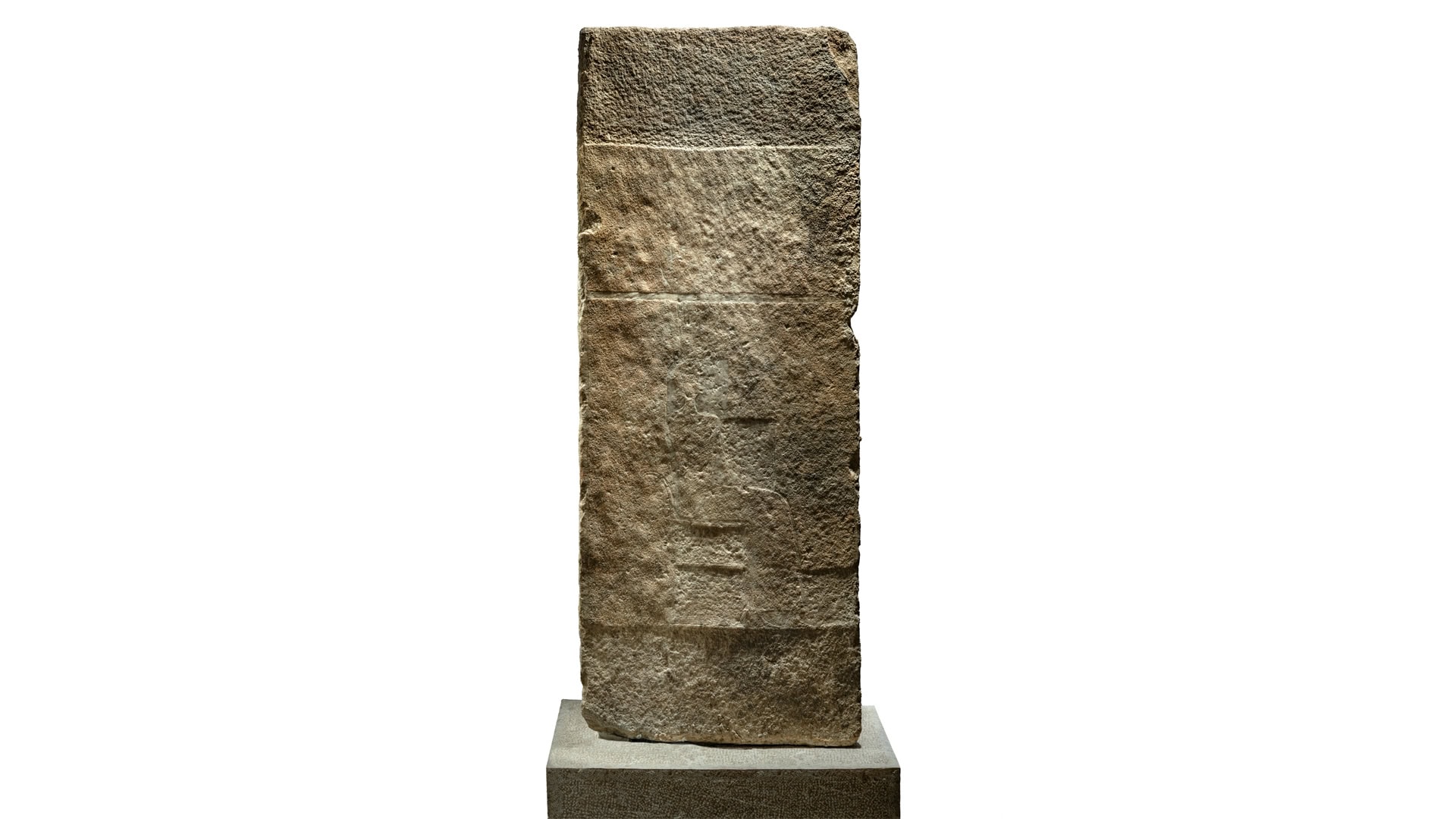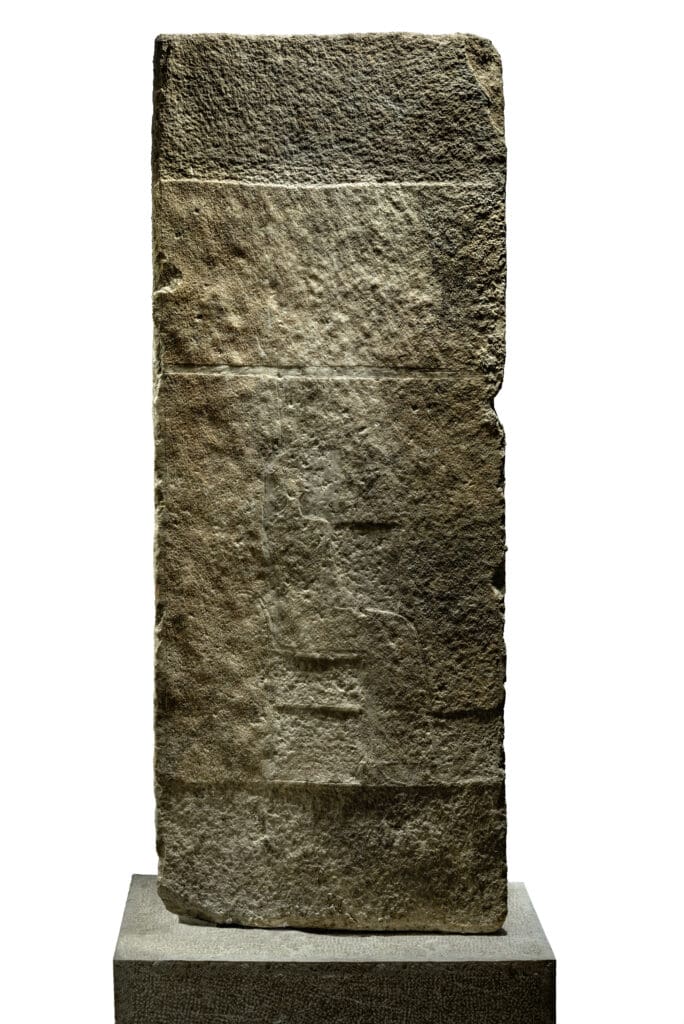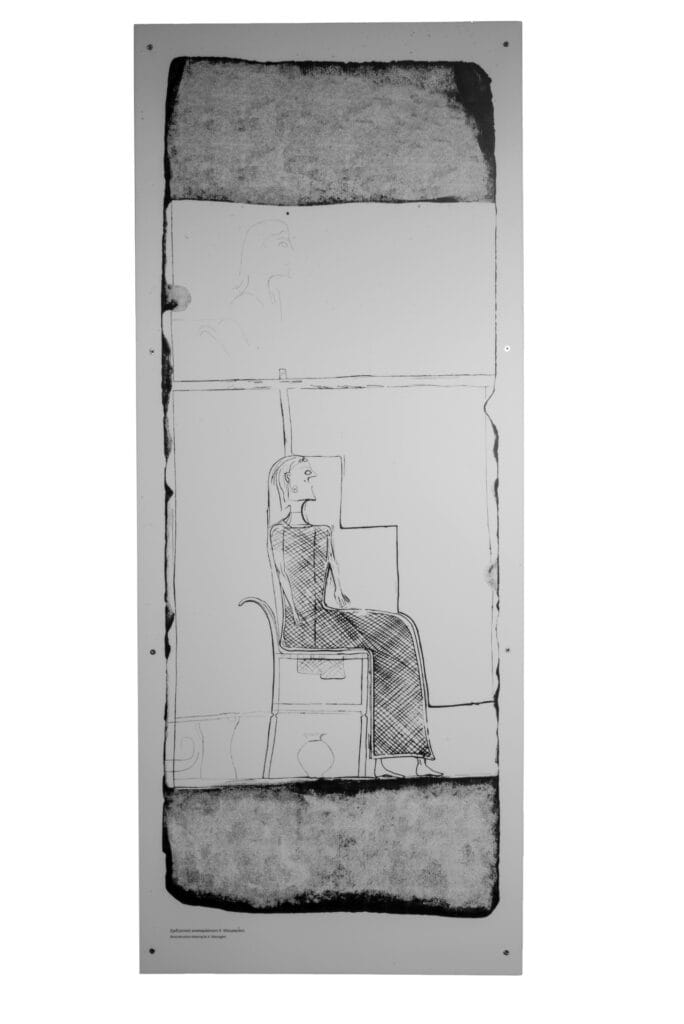Mable grave stele with representation of a female figure enthroned

The front side of a marble stele of the 7th century BC from Paros is decorated with the representation of a seated female figure. The low relief of the representation invites the visitor to look at it up close to discover the details of the composition. The woman is dressed in a netted short-sleeved himation leaving her arms exposed, while her bare feet peek out from under it. Despite the low relief, the artist has succeeded in capturing with accuracy the figure’s head with the long neck and the short hair. The facial features and the posture of the body exude grace and tranquillity. Underneath the throne upon which the figure sits are visible a jug and, behind the seat, a large object interpreted as a bathtub (louter).
By observing the panel directly above the enthroned woman, the viewer is faced with one more unexpected encounter: the head of a second female figure subtly engraved on the marble surface. It appears that this figure had served as a preliminary drawing, which the artist left unfinished in order to transfer the representation to the centre of the stele.
The seated female figure has been interpreted either as the deceased depicted on the monument that functioned as a marker for her tomb, or as a goddess, possibly Artemis, —a deity particularly popular in Paros, as is also evidenced by other displays of the exhibition— dominating the surface of the stele that would mark a place designated for votive offerings in the NE cemetery of Parikia, at the site Vitzi. Regardless of the identity of the portrayed woman, the significance of the stele lies in the fact that it features the hitherto earliest known depiction of a female figure on marble in historical times.

